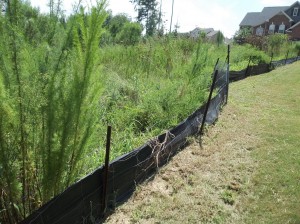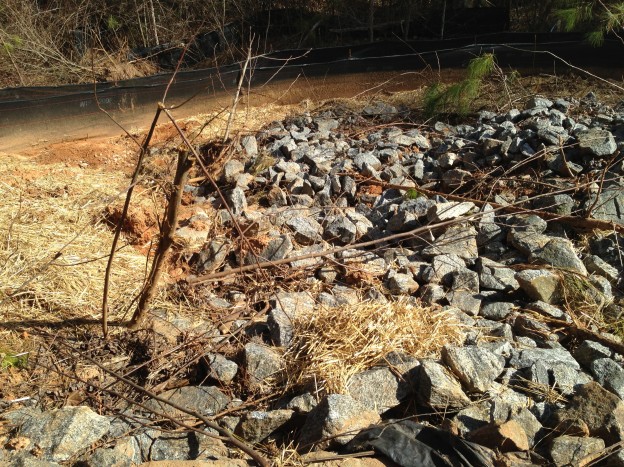This question plagues the construction industry on a daily basis and is one of the largest overlooked line items on job sites everywhere. NPDES stands for National Pollutant Discharge Elimination System. In a nutshell, the NPDES permit allows your site to discharge stormwater into waters of the state. And believe it or not, most construction sites require it.
I’ve devoted my entire career in the construction industry to one thing and one thing only…regulatory compliance, and more specifically, NPDES compliance. I’ve sat with customers in boardrooms, court rooms, and class rooms, and the number one question I hear in regards to compliance is WHY?
Why do I need NPDES inspections?
This is an easy one. Any non-exempt land disturbing activity that is greater than 1 acre requires us to file for coverage under the NPDES General Permit. To do so, we need to submit a NOI (Notice of Intent) to the Environmental Protection Division. Once this has been submitted, the law requires that we perform routine inspections until our project is complete. When our project is wrapped up, we can close out this permit with a Notice of Termination and cease inspections.
Why should I worry about it now? I’ve never done inspections before.
This can be one of the tougher questions to answer.. NPDES compliance can, and often does, get overlooked. One of the hardest things to explain to a contractor is the fact that just because it wasn’t an issue on THIS job, doesn’t mean it won’t be one on the next job. We tend to gain a false sense of confidence when we’ve gone about our daily routines for so long on job sites and never even uttered the word NPDES, much less tried to comply with any of the rules and regulations associated with it. We have to remember that NPDES is the law. State and Federal laws are beginning to tighten up and the topic of clean water has never been on the forefront of so many people’s minds. Also, as awareness and laws begin to strengthen, so does our economy. Construction, and more specifically home building, is on the rise again. As construction begins to pick up, governing agencies are able to afford to fund positions for regulatory inspectors. As the number of regulatory inspectors increase, the chances of having one pop in on your job site goes up dramatically.
What happens if I get caught?
Ah, the money question. If you get caught operating without a permit on a site that requires NPDES permitting, you’re opening yourself up to a firestorm from your governing agency. Let’s start from the beginning. Regulatory officials are trained to issue immediate stop work orders on any site without an active permit. This puts your crews and your subs on halt, potentially costing you hundreds or even thousands of dollars. Fines and penalties come next and vary in severity from case to case. The state of Georgia allows inspectors to levy fines up to $2,500 per violation, per day. How many potential violations do you have on your site? Operating without a permit would most likely be the first one listed. The most severe and overlooked penalty would be the possibility of imprisonment, especially if it can be proved in a court of law that you were knowingly circumventing your responsibilities.

Now that you know a little bit about the problem, let’s talk about how to fix it.
Get certified.
The state of Georgia requires that any person involved in land disturbing activity obtain a Blue Card (Level 1a). The Blue Card program is designed to educate these individuals on topics such as the Clean Water Act, NPDES Permits, and common problems found on construction sites. Depending on your level of involvement, there are also a few more certifications you may be interested in as well.
Keep your site in compliance.
According to the permit, NPDES inspections need to be performed at 4 different intervals: daily, weekly, post rainfall, and monthly. Know what’s required for each type of inspection and be sure to get them done on time. Next, make sure that you are pulling water quality samples. The permit requires us to sample 2 distinct discharge events. 1) After clearing and grubbing, and 2) 90 days from the first sample or after mass grading, whichever comes first. Did any of your samples fail? Don’t forget that the permit requires us to keep sampling every rain event until we meet the turbidity standards required by the permit.
Be proactive.
We’ve all heard the saying, “an ounce of prevention is worth a pound of cure”. Use this mantra as a daily routine on your site. Stay ahead of the storms by making sure that your erosion control devices are installed properly. Also, don’t forget to provide routine maintenance to any measures that may be in need. Don’t always take the cheap route either. There’s a lot to be said about doing it right the first time. And last but not least…
Ask a specialist.
Our pride loves to play tricks on our mind. Knowing that there’s someone out there who’s better at this than we are is an intimidating thought process. Don’t be scared to reach out to those who deal with this type of thing on a daily basis.
—Article submitted by Jason Hand, April 2013—





